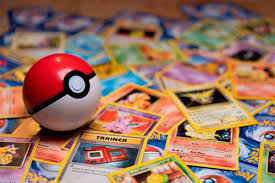The resurgence of Pokémon cards as a cultural phenomenon has been nothing short of extraordinary. While these collectible cards first gained massive popularity in the late 1990s, their resurgence in recent years owes much of its success to the power of social media. Platforms like Instagram, TikTok, YouTube, and Twitter have played a significant role in reigniting the passion for collecting, trading, and investing in Pokémon cards.
The Role of Nostalgia in the Trend
For many millennials, Pokémon cards evoke fond memories of childhood. The initial appeal of Pokémon cards lay in their connection to the beloved video games and animated series, as well as the thrill of trading and battling with friends. As these original fans grew older, nostalgia began to play a pivotal role in the revival of the trend. Social media platforms amplified this nostalgia by providing a space where users could share their collections, recount childhood experiences, and rediscover the joy of collecting.
Influencers and content creators who grew up during the Pokémon boom have leveraged this nostalgia, posting videos of themselves opening booster packs, showcasing rare cards, or reminiscing about their childhood. These posts often go viral, encouraging others to revisit their own collections or start new ones. The emotional connection fostered by nostalgia is a powerful driver, and social media acts as the perfect catalyst to spread it.
Unboxing Videos: A Key to Engagement
One of the most popular types of content driving the Pokémon card trend is unboxing videos. YouTube and TikTok are filled with creators who film themselves opening packs of Pokémon cards, hoping to pull rare or valuable cards. The excitement and suspense of these videos are contagious, and viewers are drawn into the thrill of the hunt. These unboxing videos often rack up millions of views, inspiring audiences to try their luck with their own packs.
High-profile influencers, such as Logan Paul, have brought even more attention to the trend by purchasing and unboxing highly expensive vintage Pokémon card packs. These videos often generate significant buzz, drawing in both casual fans and serious collectors. The visual and emotional appeal of unboxing videos makes them incredibly effective at promoting the hobby. For many viewers, these videos are their first introduction to the current Pokémon card craze, sparking curiosity and interest.
Building Communities and Fostering Connections
Social media platforms are not just a place to showcase collections; they are also hubs for building communities. Pokémon card enthusiasts gather in Facebook groups, Reddit forums, and Discord servers to discuss everything from card values to collecting strategies. These online communities provide a sense of belonging and camaraderie among fans, allowing them to share their passion with like-minded individuals.
Hashtags like #PokemonCards and #PokemonTCG (Trading Card Game) on Instagram and Twitter make it easy for users to discover new content and connect with others in the community. Live streams on platforms like Twitch and YouTube further enhance this sense of connection, as fans can interact with streamers in real-time while watching pack openings or gameplay. The interactive nature of these platforms ensures that the Pokémon card trend remains engaging and inclusive.
The Influence of Social Media Marketplaces
Social media has also revolutionized the way Pokémon cards are bought and sold. Platforms like Facebook Marketplace, Instagram Shops, and TikTok’s live selling feature have made it easier than ever for collectors to purchase cards directly from sellers. Additionally, online auction sites like eBay have integrated with social media advertising, making it simple for users to find and bid on rare cards.
The transparency and accessibility of these marketplaces have democratized the collecting experience, allowing newcomers to participate without needing access to traditional hobby shops. Sellers often leverage social media to promote their listings, showcasing high-quality images and videos of their cards to attract buyers. This integration of commerce and community has been instrumental in sustaining the Pokémon card trend.
Trends and Challenges in the Market
As the popularity of Pokémon cards grows, so too does the complexity of the market. Social media plays a significant role in shaping trends and influencing prices. For instance, a card featured in a viral video can see its value skyrocket almost overnight. Similarly, limited-edition releases or collaborations announced on social media often generate immense hype, leading to frenzied demand.
However, this heightened interest has also brought challenges, such as scalping and counterfeit cards. Social media platforms have become a battleground for combating these issues, with collectors sharing tips for identifying fake cards and warning others about suspicious sellers. Despite these challenges, the enthusiasm for Pokémon cards remains strong, thanks in large part to the sense of community fostered by social media.
Looking Ahead: The Future of the Trend
The Pokémon card trend shows no signs of slowing down, and social media will undoubtedly continue to play a pivotal role in its evolution. As technology advances, platforms may offer new ways to enhance the collecting experience, such as augmented reality features for viewing cards or blockchain-based authentication for ensuring their authenticity. Social media’s ability to connect people and amplify trends makes it an indispensable tool for keeping the Pokémon card phenomenon alive.
Ultimately, the enduring appeal of Pokémon cards lies in their ability to bridge the gap between generations, combining nostalgia with modern technology. Social media has not only reignited interest in this beloved hobby but has also ensured its relevance in a rapidly changing world. Whether you’re a seasoned collector or a curious newcomer, there’s no better time to dive into the world of Pokémon cards and see what treasures await.
